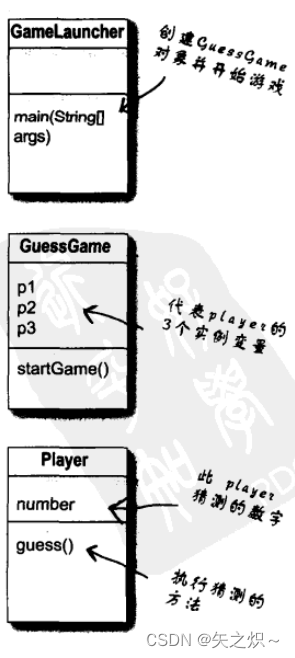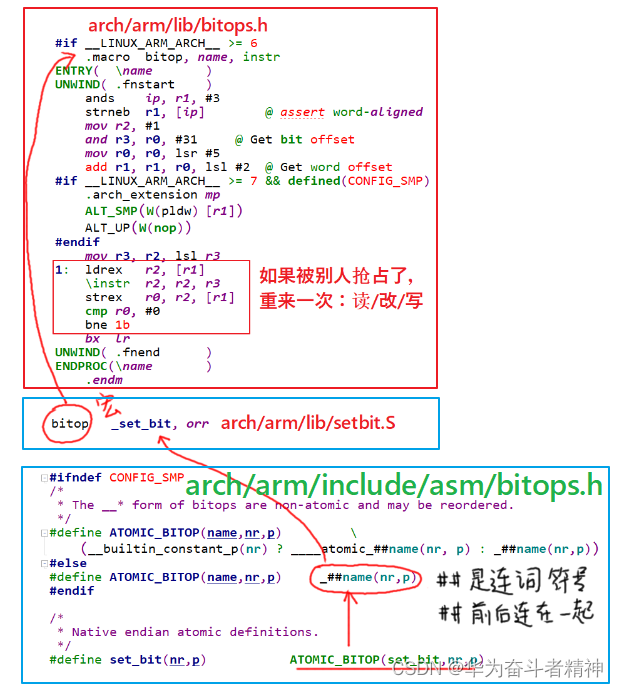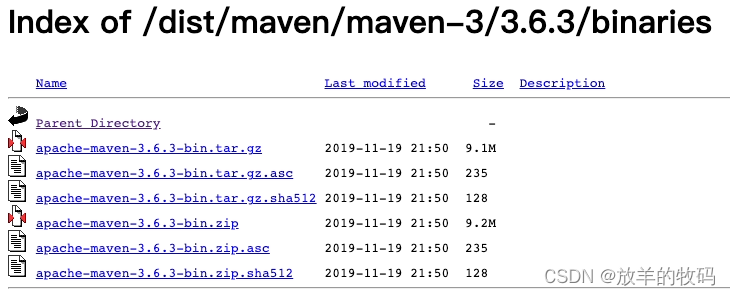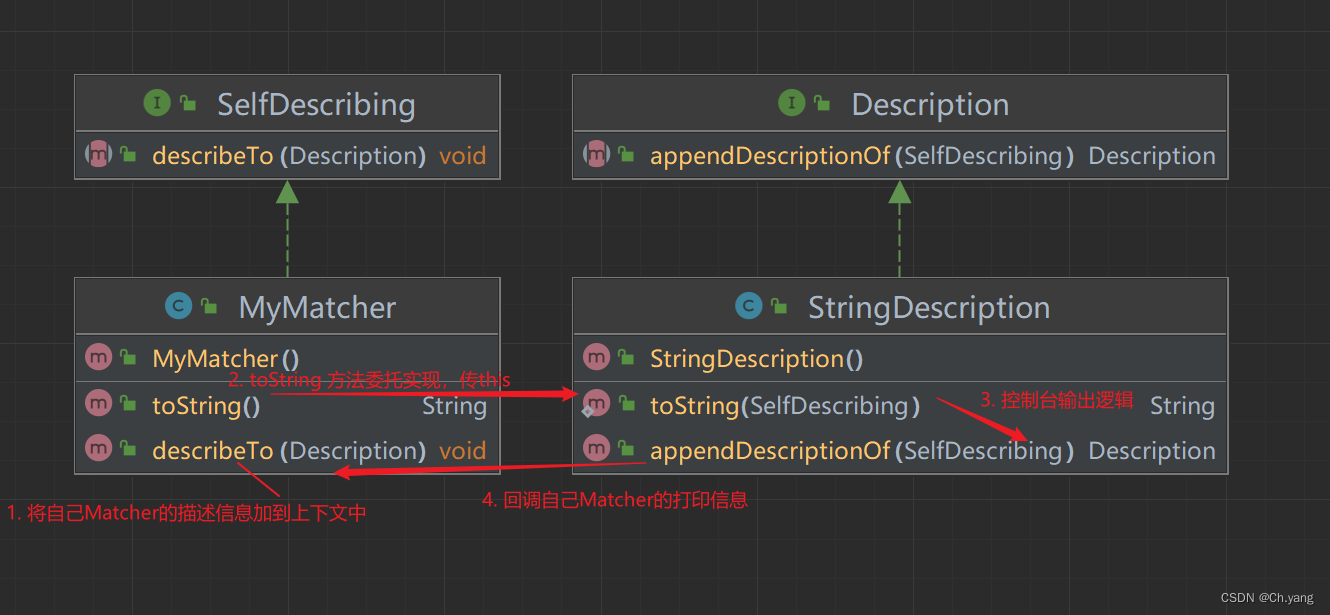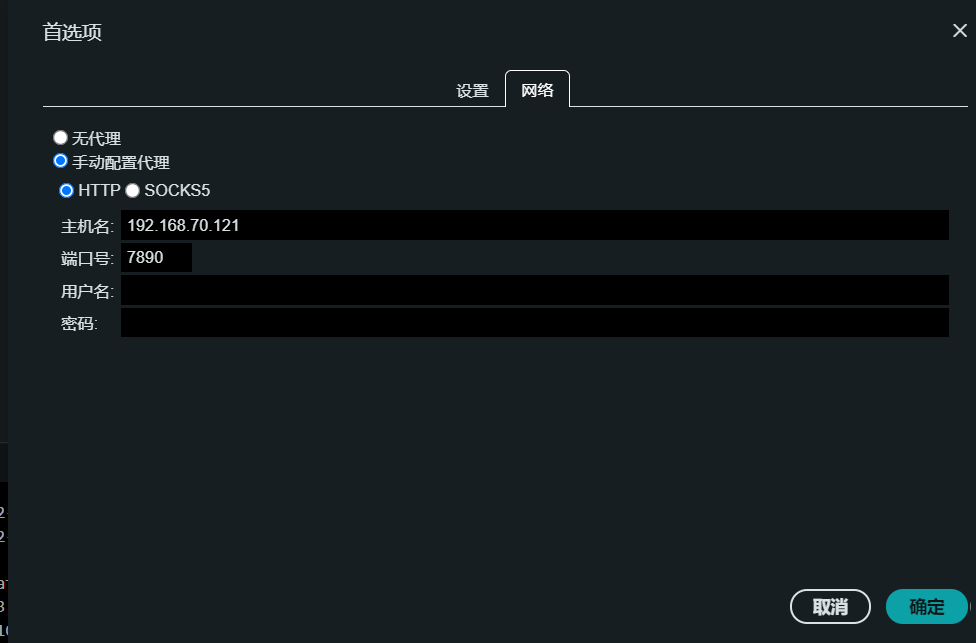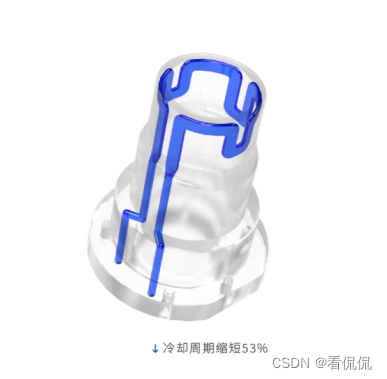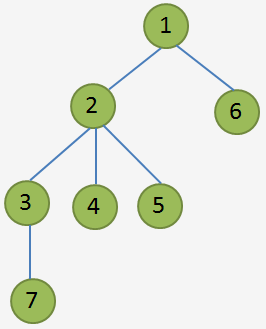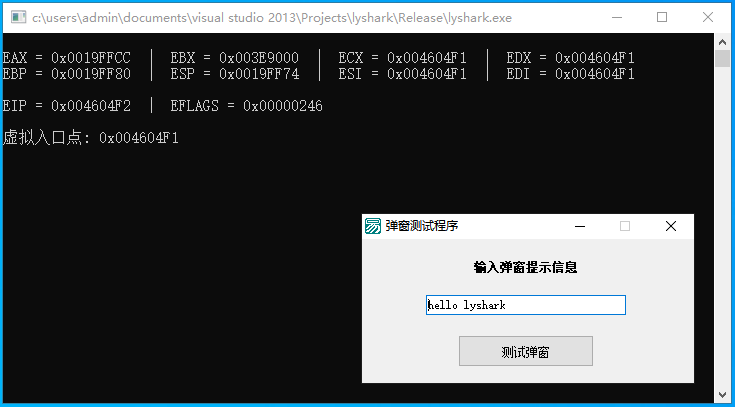一 关联式容器是什么?
c++ 中有两种容器类型:关联式容器与序列式容器(顺序容器)
关联式中的容器是按照关键字来存储与访问的,序列式容器(顺序容器)则是元素在容器中的相对位置来存储与访问的。
c++ 中的关联式容器主要是 set 与 map.
二 底层原理与源码
1. 红黑树
红黑树是一种平衡二叉搜索树(balanced binary search tree),即插入或者删除元素后,依然能够保证树是平衡的,所谓平衡意味着任意一个父节点,其左右子树的深度相差不会太多。
平衡树也称 AVL 树,任意节点的左右个子树的高度差不超过1。
这一特性也保证了在插入元素与查找元素时的效率。
红黑树核心法则:
1. 每个节点要么是红色,要么是黑色
2. 红黑树中的任意节点到达其每个叶子节点的黑色高度是相同的(黑色高度值得是某个节点到达叶子节点的黑色节点的个数,因叶子节点是黑色的,所以也包括叶子节点)
3. 两个红色节点之间不能相邻,即对于任意一个红色节点而言,其左右子节点定不是红色
4. 根节点必须是黑色的
5. 每个红色节点的两个子节点一定是黑色的
【红黑树】的详细实现(C++)附代码 - 知乎 (zhihu.com)

c++ 中的红黑树源代码位置
#include <bits/stl_tree.h
template<typename _Key, typename _Val, typename _KeyOfValue,
typename _Compare, typename _Alloc = allocator<_Val> >
class _Rb_tree
{
typedef typename __gnu_cxx::__alloc_traits<_Alloc>::template
rebind<_Rb_tree_node<_Val> >::other _Node_allocator;
typedef __gnu_cxx::__alloc_traits<_Node_allocator> _Alloc_traits;
protected:
typedef _Rb_tree_node_base* _Base_ptr;
typedef const _Rb_tree_node_base* _Const_Base_ptr;
typedef _Rb_tree_node<_Val>* _Link_type;
typedef const _Rb_tree_node<_Val>* _Const_Link_type;
......
};源码中的模板参数解释如下:
1. Key 为存储在红黑树中的关键字类型
2. Value 实际存储数据的类型
3. KeyOfValue 表示如何通过 Value 获取到 Key,通常是一个函数
4. Compare 则为比较元素大小的函数,可自定义实现
5. Alloc 分配内存的方式
#include<iostream>
#include <bits/stl_tree.h>
int main()
{
// template<typename _Tp>
// struct _Identity
// : public unary_function<_Tp,_Tp>
// {
// _Tp&
// operator()(_Tp& __x) const
// { return __x; }
// const _Tp&
// operator()(const _Tp& __x) const
// { return __x; }
// };
std::_Rb_tree<int, int, std::_Identity<int>, std::less<int>> rb_tree;
std::cout << rb_tree.empty() << std::endl;
std::cout << rb_tree.size() << std::endl;
// 1. 插入元素不允许重复.
rb_tree._M_insert_unique(1);
rb_tree._M_insert_unique(2);
rb_tree._M_insert_unique(3);
rb_tree._M_insert_unique(4);
rb_tree._M_insert_unique(5);
std::cout << rb_tree.size() << std::endl;
rb_tree._M_insert_unique(1);
std::cout << rb_tree.size() << std::endl;
std::cout << "------" << std::endl;
// 2. 插入元素允许重复.
rb_tree._M_insert_equal(1);
rb_tree._M_insert_equal(1);
rb_tree._M_insert_equal(1);
std::cout << rb_tree.size() << std::endl;
for(auto iter = rb_tree.begin(); iter != rb_tree.end(); iter++)
{
std::cout << *iter <<" ";
}
std::cout <<""<<std::endl;
return 0;
}
2. 基于红黑树的关联式容器
2.1 set/multiset
set/multiset 是以红黑树为底层结构的,因此存入的元素具有自动排序的特性,排序的依据是 key ,而 set/miltiset 元素的 key 与 value是合二为一的,其value 就是 key;
set/multiset 提供遍历操作与迭代器 iterator, 通过 不断的 iterator++ 遍历可以获取到已经排好序的元素;
我们无法通过 迭代器来改变 set/multiset 的值,这样设计的原因是 若是可以随意修改值,那么按照key 排好的顺序便有可能不存在了,从代码上来讲,set/multiset 用的迭代器是底层红黑树类 _Rb_tree 的 const iterator ,禁止使用者赋值。
2.1.1 set 源代码
template<typename _Key, typename _Compare = std::less<_Key>,
typename _Alloc = std::allocator<_Key> >
class set
{
public:
// typedefs:
//@{
/// Public typedefs.
typedef _Key key_type;
typedef _Key value_type;
typedef _Compare key_compare;
typedef _Compare value_compare;
typedef _Alloc allocator_type;
private:
typedef typename __gnu_cxx::__alloc_traits<_Alloc>::template
rebind<_Key>::other _Key_alloc_type;
typedef _Rb_tree<key_type, value_type, _Identity<value_type>,
key_compare, _Key_alloc_type> _Rep_type;
_Rep_type _M_t; // Red-black tree representing set.
typedef __gnu_cxx::__alloc_traits<_Key_alloc_type> _Alloc_traits;
.....
iterator
insert(const_iterator __position, const value_type& __x)
{ return _M_t._M_insert_unique_(__position, __x); }
.....
};通过源码可以看出,set 底层使用的是 _Rb_tree , insert 函数底层调用的是 _Rb_tree 的 insert_unique 函数,即 _Rb_tree 中的元素不重复。
2.1.2 multiset 源码
template <typename _Key, typename _Compare = std::less<_Key>,
typename _Alloc = std::allocator<_Key> >
class multiset
{
#ifdef _GLIBCXX_CONCEPT_CHECKS
// concept requirements
typedef typename _Alloc::value_type _Alloc_value_type;
# if __cplusplus < 201103L
__glibcxx_class_requires(_Key, _SGIAssignableConcept)
# endif
__glibcxx_class_requires4(_Compare, bool, _Key, _Key,
_BinaryFunctionConcept)
__glibcxx_class_requires2(_Key, _Alloc_value_type, _SameTypeConcept)
#endif
public:
// typedefs:
typedef _Key key_type;
typedef _Key value_type;
typedef _Compare key_compare;
typedef _Compare value_compare;
typedef _Alloc allocator_type;
private:
/// This turns a red-black tree into a [multi]set.
typedef typename __gnu_cxx::__alloc_traits<_Alloc>::template
rebind<_Key>::other _Key_alloc_type;
typedef _Rb_tree<key_type, value_type, _Identity<value_type>,
key_compare, _Key_alloc_type> _Rep_type;
/// The actual tree structure.
_Rep_type _M_t;
typedef __gnu_cxx::__alloc_traits<_Key_alloc_type> _Alloc_traits;
......
iterator
insert(const value_type& __x)
{ return _M_t._M_insert_equal(__x); }
......
};通过源码可以看出,multiset 底层使用的是 _Rb_tree , insert 函数底层调用的是 _Rb_tree 的 insert_equal 函数,即 _Rb_tree 中的元素允许重复。
2.2 map/multimap
map/multimap 是以红黑树为底层结构的,因此存入的元素具有自动排序的特性,排序的依据是 key;
map/multimap 提供遍历操作与迭代器 iterator, 通过 不断的 iterator++ 遍历可以获取到已经按照 key 排好序的元素;
我们无法通过 迭代器来改变 map/multimap 的值,这样设计的原因是 若是可以随意修改值,那么按照 key 排好的顺序便有可能不存在了,但是我们可以修改 key 对应的 data 值。因而 map/multimap 内部将 key type 设为 const ,如此可以避免对 key 的随意修改。
map 的key 是独一无二的,所以底层使用 _Rb_tree 的 insert_unique 函数;
multimap 的key允许重复,所以底层使用 _Rb_tree 的 insert_equal 函数
2.2.1 map 源码
template <typename _Key, typename _Tp, typename _Compare = std::less<_Key>,
typename _Alloc = std::allocator<std::pair<const _Key, _Tp> > >
class map
{
public:
typedef _Key key_type;
typedef _Tp mapped_type;
typedef std::pair<const _Key, _Tp> value_type;
typedef _Compare key_compare;
typedef _Alloc allocator_type;
private:
/// This turns a red-black tree into a [multi]map.
typedef typename __gnu_cxx::__alloc_traits<_Alloc>::template
rebind<value_type>::other _Pair_alloc_type;
typedef _Rb_tree<key_type, value_type, _Select1st<value_type>,
key_compare, _Pair_alloc_type> _Rep_type;
/// The actual tree structure.
_Rep_type _M_t;
typedef __gnu_cxx::__alloc_traits<_Pair_alloc_type> _Alloc_traits;
.....
std::pair<iterator, bool>
insert(const value_type& __x)
{ return _M_t._M_insert_unique(__x); }
.....
};通过源码可以看到 map 的 insert 函数底层调用的是 insert_unique 函数,所以 map 的 key 是唯一的。
2.2.2 multimap 源码
template <typename _Key, typename _Tp,
typename _Compare = std::less<_Key>,
typename _Alloc = std::allocator<std::pair<const _Key, _Tp> > >
class multimap
{
public:
typedef _Key key_type;
typedef _Tp mapped_type;
typedef std::pair<const _Key, _Tp> value_type;
typedef _Compare key_compare;
typedef _Alloc allocator_type;
private:
/// This turns a red-black tree into a [multi]map.
typedef typename __gnu_cxx::__alloc_traits<_Alloc>::template
rebind<value_type>::other _Pair_alloc_type;
typedef _Rb_tree<key_type, value_type, _Select1st<value_type>,
key_compare, _Pair_alloc_type> _Rep_type;
/// The actual tree structure.
_Rep_type _M_t;
typedef __gnu_cxx::__alloc_traits<_Pair_alloc_type> _Alloc_traits;
......
iterator
insert(const value_type& __x)
{ return _M_t._M_insert_equal(__x); }
......
};通过源码可以看到 multimap 的 insert 函数底层调用的是 insert_equal 函数,所以 map 的 key 是可以重复的。
2.2.3 Select1st
前面的源码中提到了 Select1st,该函数的作用是获取 pair 中的第一个元素,应用在 map 中,获取的就是 key
Select1st 源码如下:
template<typename _Pair>
struct _Select1st
: public unary_function<_Pair, typename _Pair::first_type>
{
typename _Pair::first_type&
operator()(_Pair& __x) const
{ return __x.first; }
const typename _Pair::first_type&
operator()(const _Pair& __x) const
{ return __x.first; }
};三 使用
1. set/multiset
1.1 set 函数
std::set - cppreference.com
1.1.1 构造函数
| 函数 | 说明 |
| set() | 空构造函数 |
template<typename _InputIterator> set(_InputIterator __first, _InputIterator __last) | range 构造函数 |
1.1.2 容器修改
| 函数 | 说明 |
| clear() | 清空容器 |
| insert | 插入元素 |
| emplace | 插入元素,可以只传入元素类的构造函数所需参数 |
| erase | 移除指定位置的元素 |
1.1.3 容器查找
| 函数 | 说明 |
| count | 返回指定元素的个数 |
| begin() | 返回首元素的 iterator |
| end() | 返回尾元素下一地址的 iterator,该 iterator 不能获取元素 |
| find | 查找指定元素,若是存在返回指向该元素的 iterator;若是不存在,则返回尾 iterator |
| lower_bound | Iterator pointing to the first element that is not less than key. If no such element is found, a past-the-end iterator (see end()) is returned. |
| uppser_bound | Iterator pointing to the first element that is greater than key. If no such element is found, past-the-end (see end()) iterator is returned. |
1.1.4 容器容量
| 函数 | 说明 |
| empty() | 判断 set 是否为空 |
| size() | 返回 set 中的元素个数 |
1.1.5 示例
#include<iostream>
#include<set>
int main()
{
// 1. 构造函数
std::set<int> unique_set1;
int nums[] = {1, 2, 3, 4, 5, 6};
std::set<int> unique_set2(nums, nums+6);
std::set<int> unique_set3(unique_set2.begin(), unique_set2.end());
// 2. 容器修改
unique_set1.insert(1);
unique_set1.insert(2);
unique_set1.insert(3);
unique_set1.emplace(4);
unique_set1.emplace(5);
unique_set1.erase(4);
// 3. 容器查找
std::cout << unique_set1.count(3) << std::endl; // 1
auto item1_iter = unique_set1.find(3);
std::cout << (item1_iter == unique_set1.end()) << ", " << *item1_iter << std::endl; // 0 , 3
auto item2_iter = unique_set1.lower_bound(4);
std::cout << (item2_iter == unique_set1.end()) << ", " << *item2_iter << std::endl; // 0 , 3
auto item3_iter = unique_set1.upper_bound(5);
std::cout << (item3_iter == unique_set1.end()) << ", " << *item3_iter << std::endl;
// 0 , 5
for(auto iter = unique_set1.begin(); iter != unique_set1.end(); iter++)
{
std::cout << *iter << " "; // 1. 2, 3, 5
}
std::cout << "" << std::endl;
// 4. 容器容量
std::cout << unique_set1.size() << std::endl; // 4
std::cout << unique_set1.empty() << std::endl; // 0
unique_set1.clear();
std::cout << unique_set1.size() << std::endl; // 0
std::cout << unique_set1.empty() << std::endl; // 1
return 0;
}1.2 multiset 函数
std::multiset - cppreference.com
1.2.1 构造函数
| 函数 | 说明 |
| set() | 空构造函数 |
template<typename _InputIterator> set(_InputIterator __first, _InputIterator __last) | range 构造函数 |
1.2.2 容器修改
| 函数 | 说明 |
| clear() | 清空容器 |
| insert | 插入元素 |
| emplace | 插入元素,可以只传入元素类的构造函数所需参数 |
| erase | 移除指定位置的元素 |
1.2.3 容器查找
| 函数 | 说明 |
| count | 返回指定元素的个数 |
| begin() | 返回首元素的 iterator |
| end() | 返回尾元素下一地址的 iterator,该 iterator 不能获取元素 |
| find | 查找指定元素,若是存在返回指向该元素的 iterator;若是不存在,则返回尾 iterator |
| lower_bound | Iterator pointing to the first element that is not less than key. If no such element is found, a past-the-end iterator (see end()) is returned. |
| uppser_bound | Iterator pointing to the first element that is greater than key. If no such element is found, past-the-end (see end()) iterator is returned. |
1.2.4 容器容量
| 函数 | 说明 |
| empty() | 判断 set 是否为空 |
| size() | 返回 set 中的元素个数 |
1.2.5 示例
#include<iostream>
#include<set>
int main()
{
// 1. 构造函数
std::multiset<int> multi_set1;
int nums1[] = {1, 2, 3, 4, 5, 6};
std::multiset<int> multi_set2(nums1, nums1+6);
std::multiset<int> multi_set3(multi_set2.begin(), multi_set2.end());
// 2. 容器修改
multi_set1.insert(1);
multi_set1.insert(2);
multi_set1.insert(3);
multi_set1.insert(3);
multi_set1.insert(3);
multi_set1.emplace(4);
multi_set1.emplace(5);
multi_set1.erase(4);
// 3. 容器查找
std::cout << multi_set1.count(3) << std::endl; // 3
auto item1_iter = multi_set1.find(3);
std::cout << (item1_iter == multi_set1.end()) << ", " << *item1_iter << std::endl; // 0, 3
auto item2_iter = multi_set1.lower_bound(4);
std::cout << (item2_iter == multi_set1.end()) << ", " << *item2_iter << std::endl; // 0, 5
auto item3_iter = multi_set1.upper_bound(4);
std::cout << (item3_iter == multi_set1.end()) << ", " << *item3_iter << std::endl; // 0, 5
for(auto iter = multi_set1.begin(); iter != multi_set1.end(); iter++)
{
std::cout << *iter << " "; // 1 2 3 3 3 5
}
std::cout << "" << std::endl;
// 4. 容器容量
std::cout << multi_set1.size() << std::endl; // 6
std::cout << multi_set1.empty() << std::endl; // 0
multi_set1.clear();
std::cout << multi_set1.size() << std::endl; // 0
std::cout << multi_set1.empty() << std::endl; // 1
return 0;
}2. map/multimap
2.1 map 函数
2.1.1 构造函数
| 函数 | 说明 |
| map | 默认构造函数 |
| template< class InputIt > map( InputIt first, InputIt last) | range 构造函数 |
| map( std::initializer_list<value_type> init) | initializer list 构造函数 |
2.1.2 容器修改
| 函数 | 说明 |
| clear() | 清空容器 |
| insert | 插入元素 |
| emplace | 插入元素,可以只传入元素类的构造函数所需参数 |
| erase | 移除指定位置的元素 |
2.1.3 容器访问
| 函数 | 说明 |
| count | 返回指定 key 元素的个数 |
| begin() | 返回首元素的 iterator |
| end() | 返回尾元素下一地址的 iterator,该 iterator 不能获取元素 |
| find | 查找指定元素,若是存在返回指向该元素的 iterator;若是不存在,则返回尾 iterator |
| lower_bound | Iterator pointing to the first element that is not less than key. If no such element is found, a past-the-end iterator (see end()) is returned. |
| uppser_bound | Iterator pointing to the first element that is greater than key. If no such element is found, past-the-end (see end()) iterator is returned. |
| at | Returns a reference to the mapped value of the element with key equivalent to key. If no such element exists, an exception of type std::out_of_range is thrown. |
| operator[] | Returns a reference to the value that is mapped to a key equivalent to key, performing an insertion if such key does not already exist. |
2.1.4 容器容量
| 函数 | 说明 |
| empty() | 判断 set 是否为空 |
| size() | 返回 set 中的元素个数 |
2.1.5 示例
#include<iostream>
#include<map>
int main()
{
// 1. 构造函数
std::map<int, std::string> unique_map1;
std::map<int, std::string> unique_map2 = {{1, "a"}, {22, "bb"}, {3, "c"}};
std::map<int, std::string> unique_map3(unique_map2.begin(), unique_map2.end());
// 2. 容器修改
unique_map1.insert({5, "e"});
unique_map1.insert({6, "f"});
unique_map1.emplace(7, "g");
unique_map1.emplace(8, "h");
unique_map1.insert({16, "ff"});
unique_map1.erase(16);
// 3. 容器访问
std::cout << unique_map1.count(6) << std::endl; // 1
auto item_iter1 = unique_map1.find(6);
std::cout << (item_iter1 == unique_map1.end()) << std::endl; // 0
std::cout << item_iter1->first << ", " << item_iter1->second << std::endl; // 6, f
auto item_iter2 = unique_map1.lower_bound(6);
std::cout << item_iter2->first << ", " << item_iter2->second << std::endl; // 6, f
auto item_iter3 = unique_map1.upper_bound(7);
std::cout << item_iter3->first << ", " << item_iter3->second << std::endl; // 8, h
std::cout << unique_map1.at(7) << std::endl; // g
std::cout << unique_map1[7] << std::endl; // g
// 4. 容器容量
std::cout << unique_map1.empty() << std::endl; // 0
std::cout << unique_map1.size() << std::endl; // 4
unique_map1.clear();
std::cout << unique_map1.empty() << std::endl; // 1
std::cout << unique_map1.size() << std::endl; // 0
return 0;
}2.2 multimap 函数
2.1.1 构造函数
| 函数 | 说明 |
| map | 默认构造函数 |
| template< class InputIt > map( InputIt first, InputIt last) | range 构造函数 |
| map( std::initializer_list<value_type> init) | initializer list 构造函数 |
2.1.2 容器修改
| 函数 | 说明 |
| clear() | 清空容器 |
| insert | 插入元素 |
| emplace | 插入元素,可以只传入元素类的构造函数所需参数 |
| erase | 移除指定位置的元素 |
2.1.3 容器访问
| 函数 | 说明 |
| count | 返回指定 key 元素的个数 |
| begin() | 返回首元素的 iterator |
| end() | 返回尾元素下一地址的 iterator,该 iterator 不能获取元素 |
| find | 查找指定元素,若是存在返回指向该元素的 iterator;若是不存在,则返回尾 iterator |
| lower_bound | Iterator pointing to the first element that is not less than key. If no such element is found, a past-the-end iterator (see end()) is returned. |
| uppser_bound | Iterator pointing to the first element that is greater than key. If no such element is found, past-the-end (see end()) iterator is returned. |
2.1.4 容器容量
| 函数 | 说明 |
| empty() | 判断 set 是否为空 |
| size() | 返回 set 中的元素个数 |
2.1.5 示例
#include<iostream>
#include<map>
int main()
{
// 1. 构造函数
std::multimap<int, std::string> multi_map1;
std::multimap<int, std::string> multi_map2 = {{1, "a"}, {22, "bb"}, {3, "c"}};
std::multimap<int, std::string> multi_map3(multi_map2.begin(), multi_map2.end());
// 2. 容器修改
multi_map1.insert({5, "e"});
multi_map1.insert({6, "f"});
multi_map1.emplace(7, "g1");
multi_map1.emplace(7, "g2");
multi_map1.emplace(7, "g3");
multi_map1.emplace(8, "h");
multi_map1.insert({16, "ff"});
multi_map1.erase(16);
// 3. 容器访问
std::cout << multi_map1.count(6) << std::endl; // 1
auto item_iter1 = multi_map1.find(6);
std::cout << (item_iter1 == multi_map1.end()) << std::endl; // 0
std::cout << item_iter1->first << ", " << item_iter1->second << std::endl; // 6, f
auto item_iter2 = multi_map1.lower_bound(6);
std::cout << item_iter2->first << ", " << item_iter2->second << std::endl; // 6, f
auto item_iter3 = multi_map1.upper_bound(7);
std::cout << item_iter3->first << ", " << item_iter3->second << std::endl; // 8, h
// 4. 容器容量
std::cout << multi_map1.empty() << std::endl; // 0
std::cout << multi_map1.size() << std::endl; // 6
multi_map1.clear();
std::cout << multi_map1.empty() << std::endl; // 1
std::cout << multi_map1.size() << std::endl; // 0
return 0;
}四 简单实现
1. my_set
// my_set.h
#include <bits/stl_tree.h>
template<typename T>
class my_set
{
typedef T ValueType;
typedef T KeyType;
typedef std::_Rb_tree<KeyType, ValueType, std::_Identity<ValueType>, std::less<KeyType>> Rb_type;
typedef typename std::_Rb_tree<T, T, std::_Identity<T>, std::less<T>>::const_iterator const_Iterator;
public:
my_set()
{
}
template<typename InputIterator>
my_set(InputIterator first, InputIterator last)
{
rb_tree._M_insert_unique(first, last);
}
~my_set()
{
}
const_Iterator begin()
{
return rb_tree.begin();
}
const_Iterator end()
{
return rb_tree.end();
}
void clear()
{
rb_tree.clear();
}
void insert(ValueType& val)
{
rb_tree._M_insert_unique(val);
}
void insert(ValueType&& val)
{
rb_tree._M_insert_unique(val);
}
template<typename ... Args>
void emplace(Args&& ... args)
{
rb_tree._M_emplace_unique(std::forward<Args>(args)...);
}
template<typename ... Args>
void emplace(Args& ... args)
{
rb_tree._M_emplace_unique(std::forward<Args>(args)...);
}
void erase(ValueType& val)
{
rb_tree.erase(val);
}
void erase(ValueType&& val)
{
rb_tree.erase(val);
}
std::size_t count(ValueType& val)
{
return rb_tree.count(val);
}
std::size_t count(ValueType&& val)
{
return rb_tree.count(val);
}
const_Iterator find(ValueType& val)
{
return rb_tree.find(val);
}
const_Iterator find(ValueType&& val)
{
return rb_tree.find(val);
}
bool empty()
{
return rb_tree.empty();
}
std::size_t size()
{
return rb_tree.size();
}
private:
Rb_type rb_tree;
};
// main.cpp
int main()
{
// 1. 构造函数
my_set<int> unique_set1;
int nums[] = {1, 2, 3, 4, 5, 6};
my_set<int> unique_set2(nums, nums+6);
my_set<int> unique_set3(unique_set2.begin(), unique_set2.end());
// 2. 容器修改
unique_set1.insert(1);
unique_set1.insert(2);
unique_set1.insert(3);
unique_set1.emplace(4);
unique_set1.emplace(5);
unique_set1.erase(4);
// 3. 容器查找
std::cout << unique_set1.count(3) << std::endl; // 1
auto item1_iter = unique_set1.find(3);
std::cout << (item1_iter == unique_set1.end()) << ", " << *item1_iter << std::endl; // 0. 3
for(auto iter = unique_set1.begin(); iter != unique_set1.end(); iter++)
{
std::cout << *iter << " "; // 1 2 3 5
}
std::cout << "" << std::endl;
// 4. 容器容量
std::cout << unique_set1.size() << std::endl; // 4
std::cout << unique_set1.empty() << std::endl; // 0
unique_set1.clear();
std::cout << unique_set1.size() << std::endl; // 0
std::cout << unique_set1.empty() << std::endl; // 1
return 0;
}2. my_multiset
// my_multiset.h
#include <bits/stl_tree.h>
template<typename T>
class my_multiset
{
typedef T ValueType;
typedef T KeyType;
typedef std::_Rb_tree<KeyType, ValueType, std::_Identity<ValueType>, std::less<KeyType>> Rb_type;
typedef typename std::_Rb_tree<T, T, std::_Identity<T>, std::less<T>>::const_iterator const_Iterator;
public:
my_multiset()
{
}
template<typename InputIterator>
my_multiset(InputIterator first, InputIterator last)
{
rb_tree._M_insert_equal(first, last);
}
~my_multiset()
{
}
const_Iterator begin()
{
return rb_tree.begin();
}
const_Iterator end()
{
return rb_tree.end();
}
void clear()
{
rb_tree.clear();
}
void insert(ValueType& val)
{
rb_tree._M_insert_equal(val);
}
void insert(ValueType&& val)
{
rb_tree._M_insert_equal(val);
}
template<typename ... Args>
void emplace(Args&& ... args)
{
rb_tree._M_emplace_unique(std::forward<Args>(args)...);
}
template<typename ... Args>
void emplace(Args& ... args)
{
rb_tree._M_emplace_unique(std::forward<Args>(args)...);
}
void erase(ValueType& val)
{
rb_tree.erase(val);
}
void erase(ValueType&& val)
{
rb_tree.erase(val);
}
std::size_t count(ValueType& val)
{
return rb_tree.count(val);
}
std::size_t count(ValueType&& val)
{
return rb_tree.count(val);
}
const_Iterator find(ValueType& val)
{
return rb_tree.find(val);
}
const_Iterator find(ValueType&& val)
{
return rb_tree.find(val);
}
bool empty()
{
return rb_tree.empty();
}
std::size_t size()
{
return rb_tree.size();
}
private:
Rb_type rb_tree;
};
// main.cpp
#include<iostream>
#include"my_multiset.h"
int main()
{
// 1. 构造函数
my_multiset<int> multi_set1;
int nums[] = {1, 2, 3, 4, 5, 6};
my_multiset<int> multi_set2(nums, nums+6);
my_multiset<int> multi_set3(multi_set2.begin(), multi_set2.end());
// 2. 容器修改
multi_set1.insert(1);
multi_set1.insert(2);
multi_set1.insert(3);
multi_set1.insert(3);
multi_set1.insert(3);
multi_set1.emplace(4);
multi_set1.emplace(5);
multi_set1.erase(4);
// 3. 容器查找
std::cout << multi_set1.count(3) << std::endl; // 1
auto item1_iter = multi_set1.find(3);
std::cout << (item1_iter == multi_set1.end()) << ", " << *item1_iter << std::endl; // 0, 3
for(auto iter = multi_set1.begin(); iter != multi_set1.end(); iter++)
{
std::cout << *iter << " "; // 1 2 3 3 3 5
}
std::cout << "" << std::endl;
// 4. 容器容量
std::cout << multi_set1.size() << std::endl; // 6
std::cout << multi_set1.empty() << std::endl; // 0
multi_set1.clear();
std::cout << multi_set1.size() << std::endl; // 0
std::cout << multi_set1.empty() << std::endl; // 1
return 0;
}
3. my_map
// my_map.h
#include <bits/stl_tree.h>
#include<initializer_list>
template<typename Key, typename Value>
class my_map
{
typedef std::pair<Key, Value> ValueType;
typedef std::_Rb_tree<Key, ValueType, std::_Select1st<ValueType>, std::less<Key>> Rb_type;
typedef typename Rb_type::iterator Iterator;
public:
my_map()
{
}
template<typename InputIterator>
my_map(InputIterator first, InputIterator last)
{
rb_tree._M_insert_unique(first, last);
}
my_map(std::initializer_list<ValueType> init_list)
{
rb_tree._M_insert_unique(init_list.begin(), init_list.end());
}
~my_map()
{
}
Iterator begin()
{
return rb_tree.begin();
}
Iterator end()
{
return rb_tree.end();
}
void clear()
{
rb_tree.clear();
}
void insert(ValueType& val)
{
rb_tree._M_insert_unique(val);
}
void insert(ValueType&& val)
{
rb_tree._M_insert_unique(val);
}
template<typename ... Args>
void emplace(Args&& ... args)
{
rb_tree._M_emplace_unique(std::forward<Args>(args)...);
}
void erase(Iterator iter)
{
rb_tree.erase(iter);
}
std::size_t count(Key& key)
{
return rb_tree.count(key);
}
std::size_t count(Key&& key)
{
return rb_tree.count(key);
}
Iterator find(Key& key)
{
return rb_tree.find(key);
}
Iterator find(Key&& key)
{
return rb_tree.find(key);
}
Value& at(Key& key)
{
return (*rb_tree.lower_bound(key)).second;
}
Value& at(Key&& key)
{
return (*rb_tree.lower_bound(key)).second;
}
Value& operator[](Key& key)
{
return (*rb_tree.lower_bound(key)).second;
}
Value& operator[](Key&& key)
{
return (*rb_tree.lower_bound(key)).second;
}
bool empty()
{
return rb_tree.empty();
}
std::size_t size()
{
return rb_tree.size();
}
void erase(Key& key)
{
rb_tree.erase(key);
}
void erase(Key&& key)
{
rb_tree.erase(key);
}
private:
Rb_type rb_tree;
};
// main.cpp
int main()
{
// 1. 构造函数
my_map<int, std::string> unique_map1;
my_map<int, std::string> unique_map2 = {{1, "a"}, {22, "bb"}, {3, "c"}};
my_map<int, std::string> unique_map3(unique_map2.begin(), unique_map2.end());
// 2. 容器修改
unique_map1.insert({5, "e"});
unique_map1.insert({6, "f"});
unique_map1.emplace(7, "g");
unique_map1.emplace(8, "h");
unique_map1.insert({16, "ff"});
unique_map1.erase(16);
// 3. 容器访问
std::cout << unique_map1.count(6) << std::endl; // 1
auto item_iter1 = unique_map1.find(6);
std::cout << (item_iter1 == unique_map1.end()) << std::endl; // 0
std::cout << item_iter1->first << ", " << item_iter1->second << std::endl; // 6, f
std::cout << unique_map1.at(7) << std::endl; // g
std::cout << unique_map1[7] << std::endl; // g
// 4. 容器容量
std::cout << unique_map1.empty() << std::endl; // 0
std::cout << unique_map1.size() << std::endl; // 4
unique_map1.clear();
std::cout << unique_map1.empty() << std::endl; // 1
std::cout << unique_map1.size() << std::endl; // 0
return 0;
}4. my_multimap
// my_multimap.h
#include <bits/stl_tree.h>
#include<initializer_list>
template<typename Key, typename Value>
class my_multimap
{
typedef std::pair<Key, Value> ValueType;
typedef std::_Rb_tree<Key, ValueType, std::_Select1st<ValueType>, std::less<Key>> Rb_type;
typedef typename Rb_type::iterator Iterator;
public:
my_multimap()
{
}
template<typename InputIterator>
my_multimap(InputIterator first, InputIterator last)
{
rb_tree._M_insert_equal(first, last);
}
my_multimap(std::initializer_list<ValueType> init_list)
{
rb_tree._M_insert_equal(init_list.begin(), init_list.end());
}
~my_multimap()
{
}
Iterator begin()
{
return rb_tree.begin();
}
Iterator end()
{
return rb_tree.end();
}
void clear()
{
rb_tree.clear();
}
void insert(ValueType& val)
{
rb_tree._M_insert_equal(val);
}
void insert(ValueType&& val)
{
rb_tree._M_insert_equal(val);
}
template<typename ... Args>
void emplace(Args&& ... args)
{
rb_tree._M_emplace_equal(std::forward<Args>(args)...);
}
void erase(Iterator iter)
{
rb_tree.erase(iter);
}
std::size_t count(Key& key)
{
return rb_tree.count(key);
}
std::size_t count(Key&& key)
{
return rb_tree.count(key);
}
Iterator find(Key& key)
{
return rb_tree.find(key);
}
Iterator find(Key&& key)
{
return rb_tree.find(key);
}
bool empty()
{
return rb_tree.empty();
}
std::size_t size()
{
return rb_tree.size();
}
void erase(Key& key)
{
rb_tree.erase(key);
}
void erase(Key&& key)
{
rb_tree.erase(key);
}
private:
Rb_type rb_tree;
};
// main.cpp
#include<iostream>
#include"my_multimap.h"
int main()
{
// 1. 构造函数
my_multimap<int, std::string> multi_map1;
my_multimap<int, std::string> multi_map2 = {{1, "a"}, {22, "bb"}, {3, "c"}};
my_multimap<int, std::string> multi_map3(multi_map2.begin(), multi_map2.end());
// 2. 容器修改
multi_map1.insert({5, "e"});
multi_map1.insert({6, "f"});
multi_map1.emplace(7, "g");
multi_map1.emplace(7, "g");
multi_map1.emplace(7, "g");
multi_map1.emplace(8, "h");
multi_map1.insert({16, "ff"});
multi_map1.erase(16);
// 3. 容器访问
std::cout << multi_map1.count(6) << std::endl; // 1
auto item_iter1 = multi_map1.find(6);
std::cout << (item_iter1 == multi_map1.end()) << std::endl; // 0
std::cout << item_iter1->first << ", " << item_iter1->second << std::endl; // 6, f
// 4. 容器容量
std::cout << multi_map1.empty() << std::endl; // 0
std::cout << multi_map1.size() << std::endl; // 6
multi_map1.clear();
std::cout << multi_map1.empty() << std::endl; // 1
std::cout << multi_map1.size() << std::endl; // 0
return 0;
}


